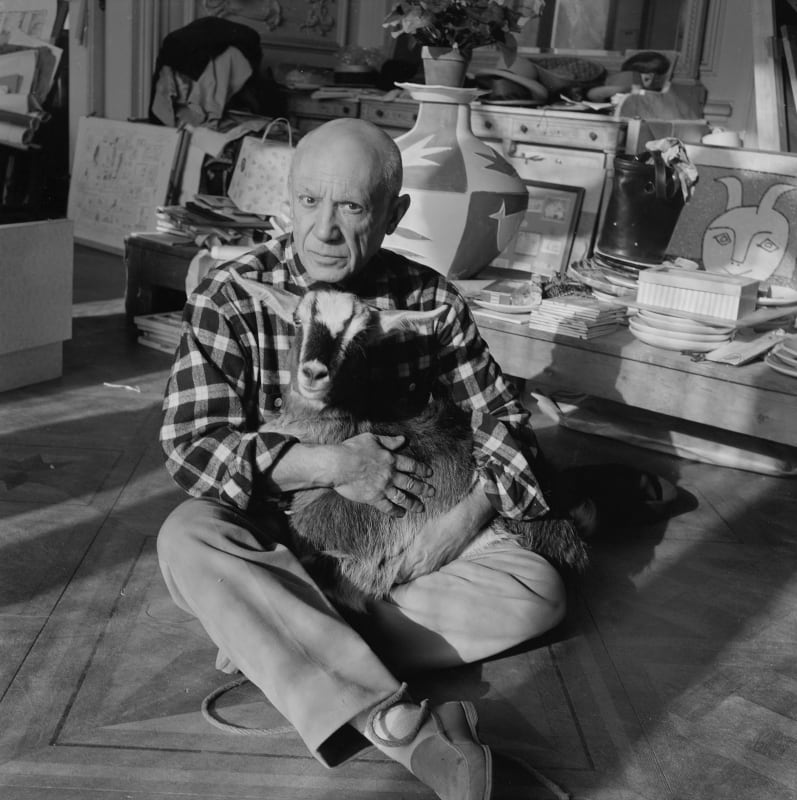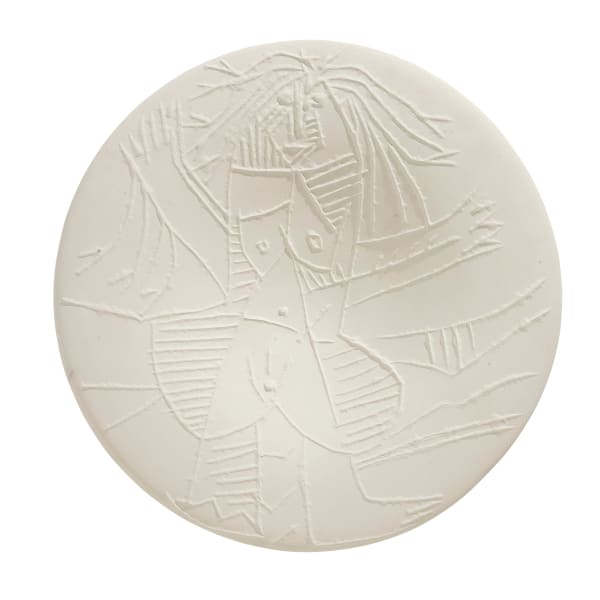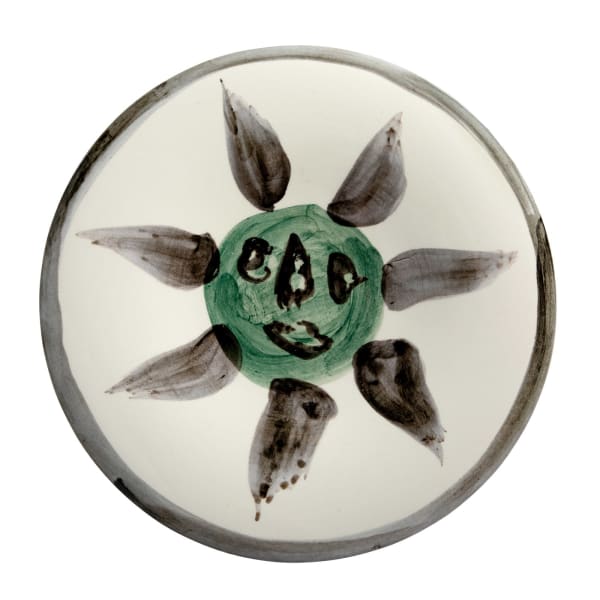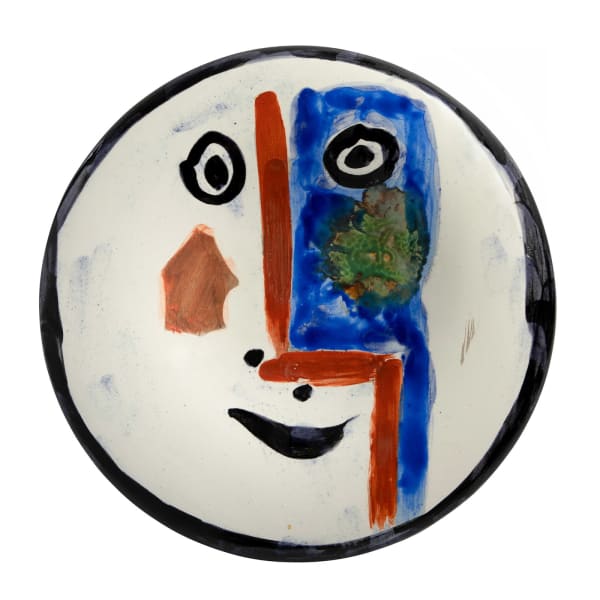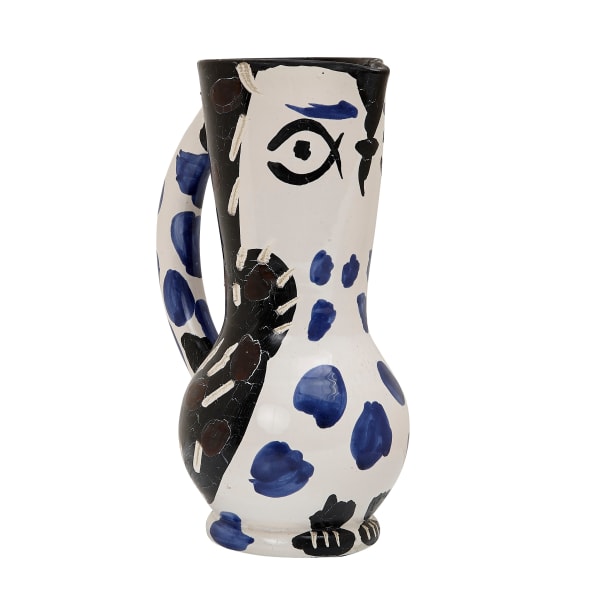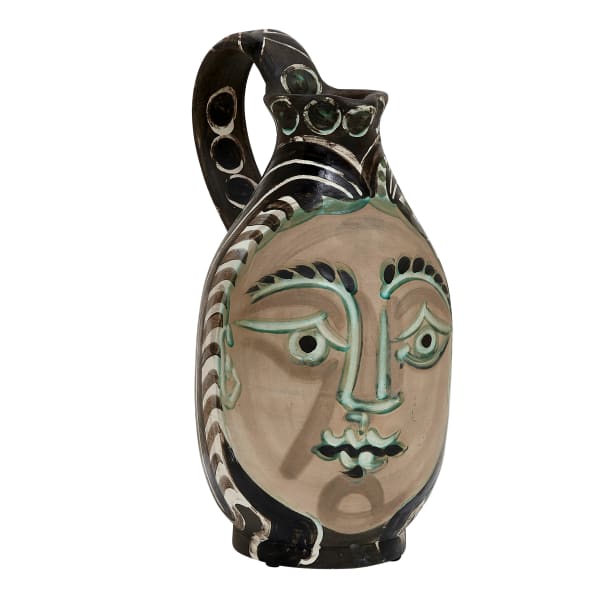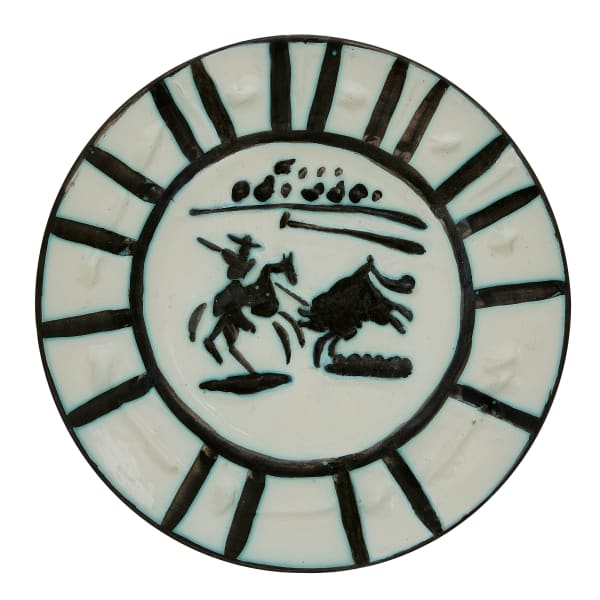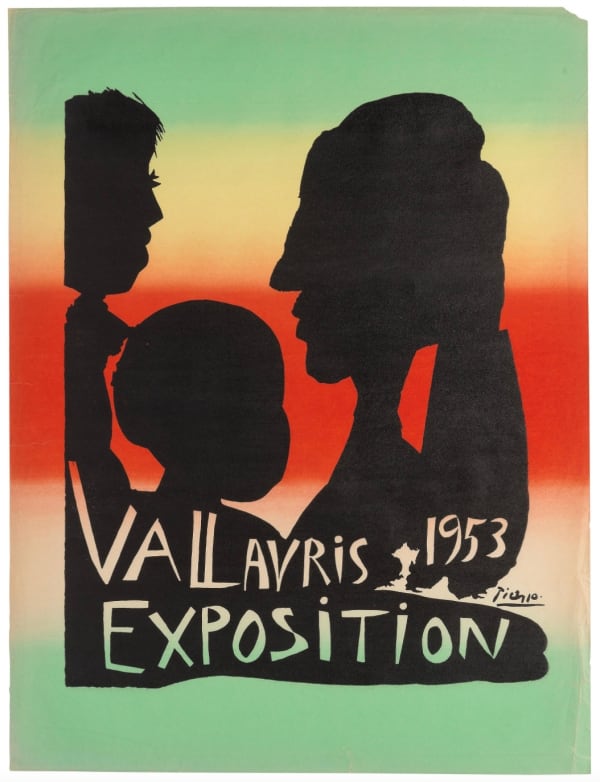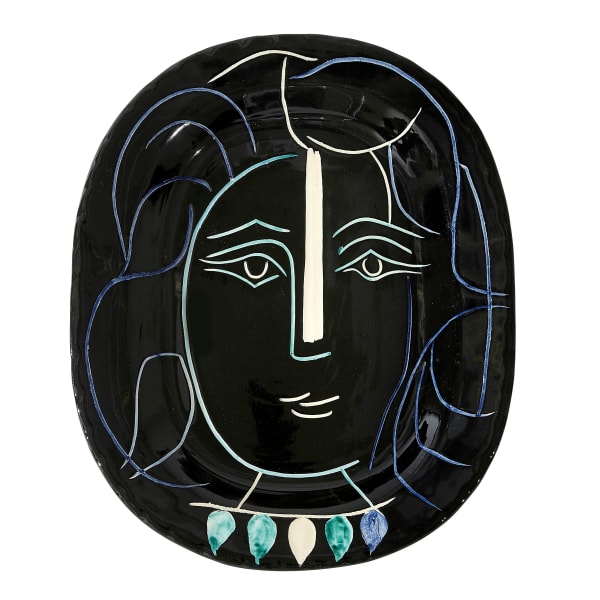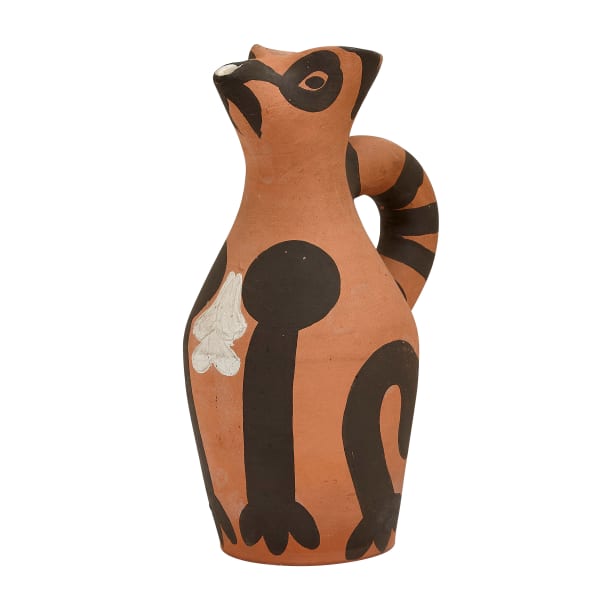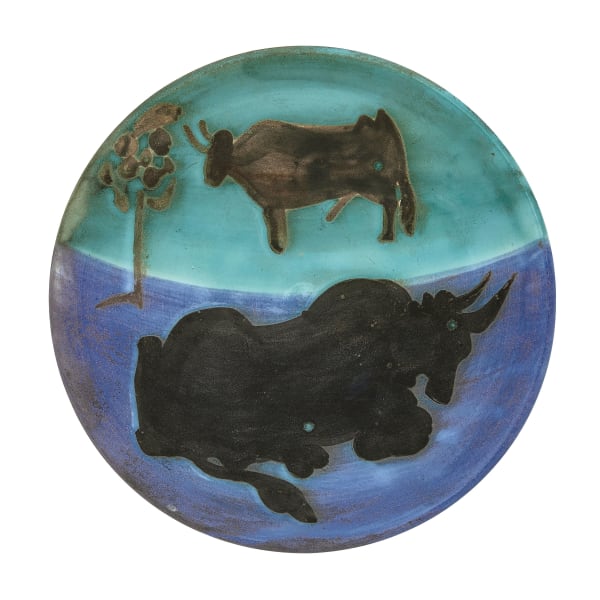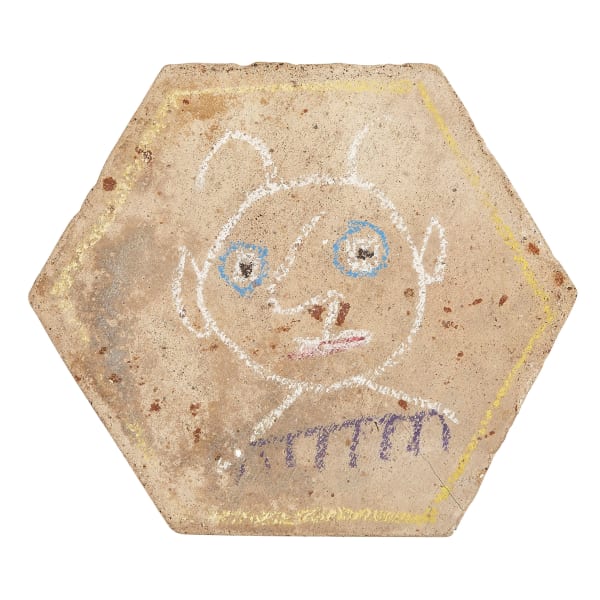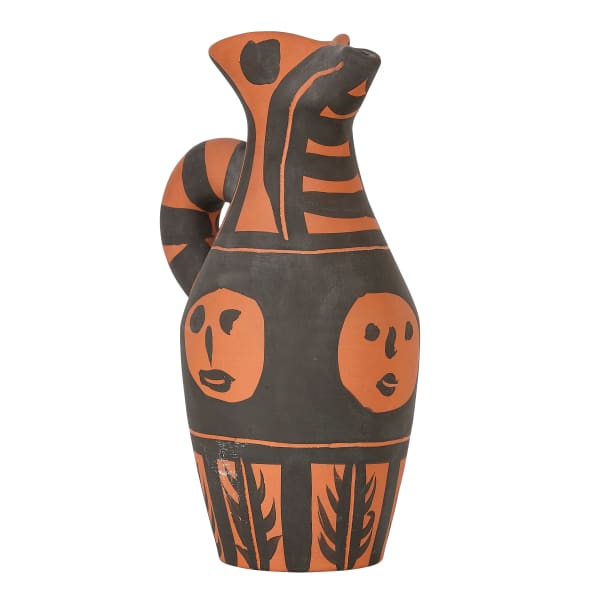Pablo Picasso
Overview
Pablo Picasso’s (1881–1973) work spans some of the most crucial artistic movements of his time – yet his oeuvre resists categorisation. His legendary status is in part due to his unrivaled involvement in the shifts and changes that make up the history of twentieth century art.
It is only more recently that his ceramics, a key aspect of his prolific career, have begun to garner the public attention they deserve. His expansive work in ceramics was sparked by a visit to the Madoura pottery workshop near his summer home in the south of France, the beginning of a collaboration that lasted over two decades until his death in 1973.
Picasso's ceramics offer a key insight into what marks him out as one of the most inventive artists of the modern era. Often incorporating scraps of waste clay, or painting over existing pottery with colorful Mediterranean motifs, Picasso proved the ceramic process to be worthy of fine art status. Seeing in ceramics the opportunity for works of art to reach a wider audience, Picasso re-edited some of the 633 ceramics he produced over the period, turning them into original editions.
Picasso’s ceramics are frequently the subject of their own exhibition, such as at the Louisiana Museum of Modern Art, in 2018, and the National Museum of Modern and Contemporary Art, Cheongju, which ends January 2024.
Works
-
 Tomette, circa 1955-59
Tomette, circa 1955-59 -
 Etoile de mer, circa 1952-62
Etoile de mer, circa 1952-62 -
 Losange a la danse (A. R. 619), 1971
Losange a la danse (A. R. 619), 1971 -
 Petit carré au visage (A. R. 633), 1971
Petit carré au visage (A. R. 633), 1971 -
 Chouette (A. R. 604), 1969
Chouette (A. R. 604), 1969 -
 Chouette (A. R. 605), 1969
Chouette (A. R. 605), 1969 -
 Visage (A. R. 611), 1969
Visage (A. R. 611), 1969 -
 Personnages et cavalier (A. R. 540), 1968
Personnages et cavalier (A. R. 540), 1968 -
 Visage au trait oblique (A. R. 588), 1968
Visage au trait oblique (A. R. 588), 1968 -
 Grosse tête, profil droit (A. R. 536), 1965
Grosse tête, profil droit (A. R. 536), 1965 -
 Visage (A. R. 533), 1965
Visage (A. R. 533), 1965 -
 Le verre sous la lampe (A.R. 519), 1964
Le verre sous la lampe (A.R. 519), 1964 -
 Femme échevelée (A. R. 510), 1963
Femme échevelée (A. R. 510), 1963 -
 Oiseau no. 76 (A. R. 481), 1963
Oiseau no. 76 (A. R. 481), 1963 -
 Oiseau no. 82 (A. R. 482), 1963
Oiseau no. 82 (A. R. 482), 1963 -
 Oiseau no. 83 (A. R. 483), 1963
Oiseau no. 83 (A. R. 483), 1963 -
 Visage Lunaire (A. R. 502 Prototype) , 1963
Visage Lunaire (A. R. 502 Prototype) , 1963 -
 Visage No. 101 (A. R. 475), 1963
Visage No. 101 (A. R. 475), 1963 -
 Visage no. 111 (A. R. 476), 1963 Sold
Visage no. 111 (A. R. 476), 1963 Sold -
 Visage No. 127 (A. R. 478), 1963
Visage No. 127 (A. R. 478), 1963 -
 Visage no. 130 (A. R. 479), 1963 Sold
Visage no. 130 (A. R. 479), 1963 Sold -
 Visage no. 144 (A. R. 480), 1963 Sold
Visage no. 144 (A. R. 480), 1963 Sold -
 Visage no. 193 (A. R. 493), 1963
Visage no. 193 (A. R. 493), 1963 -
 Visage no. 197 (A. R. 494), 1963 Sold
Visage no. 197 (A. R. 494), 1963 Sold -
 Visage no. 203 (A. R. 496), 1963
Visage no. 203 (A. R. 496), 1963 -
 Visage No. 72 (A. R. 474), 1963
Visage No. 72 (A. R. 474), 1963 -
 Exposition de Vallauris 1962, 1962
Exposition de Vallauris 1962, 1962 -
 Profil de Jacqueline (A. R. 457), 1962
Profil de Jacqueline (A. R. 457), 1962 -
 Les dejeuners, 1961
Les dejeuners, 1961 -
 Picador (A. R. 418), 1959
Picador (A. R. 418), 1959 -
 Picador et taureau (A. R. 438), 1959
Picador et taureau (A. R. 438), 1959 -
 Scène de tauromachie (A. R. 410), 1959
Scène de tauromachie (A. R. 410), 1959 -
 Sujet colombe (A. R. 435), 1959
Sujet colombe (A. R. 435), 1959 -
 Hibou noir perche (A. R. 398), 1957
Hibou noir perche (A. R. 398), 1957 -
 Motif spiralé (A. R. 404), 1957
Motif spiralé (A. R. 404), 1957 -
 Scène de tauromachie (A. R. 393), 1957
Scène de tauromachie (A. R. 393), 1957 -
 Taureau, marli aux feuilles (A. R. 394), 1957
Taureau, marli aux feuilles (A. R. 394), 1957 -
 Centaure (A. R. 338), 1956
Centaure (A. R. 338), 1956 -
 Danseurs (A. R. 387), 1956 Sold
Danseurs (A. R. 387), 1956 Sold -
 Deux danseurs (A. R. 380), 1956 Sold
Deux danseurs (A. R. 380), 1956 Sold -
 Dormeur (A. R. 343), 1956
Dormeur (A. R. 343), 1956 -
 Dormeur (A. R. 343), 1956
Dormeur (A. R. 343), 1956 -
 Horloge aux chiffres (A. R. 326), 1956
Horloge aux chiffres (A. R. 326), 1956 -
 Joie de vivre (A. R. 346), 1956
Joie de vivre (A. R. 346), 1956 -
 Joueur de diaule et faune (A. R. 342), 1956
Joueur de diaule et faune (A. R. 342), 1956 -
 Joueur de flûte et chèvre (A. R. 381 Variant), 1956
Joueur de flûte et chèvre (A. R. 381 Variant), 1956 -
 Joueur de flûte et chèvre (A. R. 382), 1956
Joueur de flûte et chèvre (A. R. 382), 1956 -
 Plongeurs (A. R. 378), 1956
Plongeurs (A. R. 378), 1956 -
 Profil de Jacqueline (A. R. 309), 1956
Profil de Jacqueline (A. R. 309), 1956 -
 Profil de Jacqueline (A. R. 383/385), 1956 Sold
Profil de Jacqueline (A. R. 383/385), 1956 Sold -
 Profil de Jacqueline (A. R. 385), 1956 Sold
Profil de Jacqueline (A. R. 385), 1956 Sold -
 Vallauris (A. R. 330), 1956
Vallauris (A. R. 330), 1956 -
 Cruchon hibou (A. R. 293), 1955
Cruchon hibou (A. R. 293), 1955 -
 Femme (A. R. 296), 1955
Femme (A. R. 296), 1955 -
 Femme (A. R. 297), 1955
Femme (A. R. 297), 1955 -
 Hibou brilliant (A. R. 285), 1955
Hibou brilliant (A. R. 285), 1955 -
 Hibou mat (A. R. 284), 1955
Hibou mat (A. R. 284), 1955 -
 Lamp femme (A. R. 294) - Variant, 1955
Lamp femme (A. R. 294) - Variant, 1955 -
 Pêcheur à la ligne (A. R. 263), 1955
Pêcheur à la ligne (A. R. 263), 1955 -
 Picador (A. R. 289), 1955
Picador (A. R. 289), 1955 -
 Profil de Jacqueline (A. R. 267), 1955
Profil de Jacqueline (A. R. 267), 1955 -
 Visage (A. R. 290), 1955
Visage (A. R. 290), 1955 -
 Visage de faune, 1955
Visage de faune, 1955 -
 Bouteille gravée (A. R. 249), 1954
Bouteille gravée (A. R. 249), 1954 -
 Hibou (A. R. 253), 1954
Hibou (A. R. 253), 1954 -
 Nu couché endormi, 1954
Nu couché endormi, 1954 -
 Centaure et visage (A. R. 188), 1953
Centaure et visage (A. R. 188), 1953 -
 Colombe brillante (A. R. 218), 1953
Colombe brillante (A. R. 218), 1953 -
 Corrida (A. R. 181), 1953
Corrida (A. R. 181), 1953 -
 Corrida (A. R. 182), 1953
Corrida (A. R. 182), 1953 -
 Femme du barbu (A. R. 193), 1953
Femme du barbu (A. R. 193), 1953 -
 Le barbu (A. R. 217), 1953
Le barbu (A. R. 217), 1953 -
 Nature morte (A. R. 219), 1953
Nature morte (A. R. 219), 1953 -
 Picador (A. R. 201 Variant), 1953
Picador (A. R. 201 Variant), 1953 -
 Picador (A. R. 201), 1953
Picador (A. R. 201), 1953 -
 Picador (A. R. 202 Prototype), 1953
Picador (A. R. 202 Prototype), 1953 -
 Picador et taureau (A. R. 197), 1953
Picador et taureau (A. R. 197), 1953 -
 Pichet Anse Pris (A. R. 186), 1953
Pichet Anse Pris (A. R. 186), 1953 -
 Vallauris 1953 Exposition, 1953
Vallauris 1953 Exposition, 1953 -
 Vase deux anses hautes (A. R. 213), 1953
Vase deux anses hautes (A. R. 213), 1953 -
 Visage de femme (A. R. 220), 1953
Visage de femme (A. R. 220), 1953 -
 Nature morte à la cuillère (A. R. 163), 1952
Nature morte à la cuillère (A. R. 163), 1952 -
 Oiseau à la huppe (A. R. 173), 1952
Oiseau à la huppe (A. R. 173), 1952 -
 Oiseau sur la branche (A. R. 175), 1952
Oiseau sur la branche (A. R. 175), 1952 -
 Picador (A. R. 160), 1952
Picador (A. R. 160), 1952 -
 Pichet à glace (A. R. 142), 1952
Pichet à glace (A. R. 142), 1952 -
 Pichet à glace (A. R. 143), 1952
Pichet à glace (A. R. 143), 1952 -
 Pitchet Yan (A. R. 140), 1952
Pitchet Yan (A. R. 140), 1952 -
 Poisson chiné (A. R. 170), 1952
Poisson chiné (A. R. 170), 1952 -
 Taureau sous l'arbe (A. R. 159), 1952
Taureau sous l'arbe (A. R. 159), 1952 -
 Tête de chèvre de profil (A. R. 151 Variant), 1952
Tête de chèvre de profil (A. R. 151 Variant), 1952 -
 Toros (A. R. 161), 1952
Toros (A. R. 161), 1952 -
 Vase deux anses hautes (A. R. 141), 1952
Vase deux anses hautes (A. R. 141), 1952 -
 Choette aux taches (A. R. 120), 1951
Choette aux taches (A. R. 120), 1951 -
 Chouette femme (A. R. 119), 1951
Chouette femme (A. R. 119), 1951 -
 Hibou marron noir (A. R. 123), 1951 Sold
Hibou marron noir (A. R. 123), 1951 Sold -
 Joueur de flute (A. R. 126 Variant), 1951
Joueur de flute (A. R. 126 Variant), 1951 -
 Poisson de profil (A. R. 131), 1951
Poisson de profil (A. R. 131), 1951 -
 Corrida aux personnages (A. R. 104), 1950
Corrida aux personnages (A. R. 104), 1950 -
 Tête de chèvre de profil (A. R. 106), 1950 Sold
Tête de chèvre de profil (A. R. 106), 1950 Sold -
 Tête de chèvre de profil (A. R. 110 Variant), 1950
Tête de chèvre de profil (A. R. 110 Variant), 1950 -
 Chouette (A. R. 48), 1948
Chouette (A. R. 48), 1948 -
 Colombe mate (A. R. 77), 1948
Colombe mate (A. R. 77), 1948 -
 Service visage noir (A. R. 41) - Visage F, 1948
Service visage noir (A. R. 41) - Visage F, 1948 -
 Tete de faune (A. R. 51), 1948
Tete de faune (A. R. 51), 1948 -
 Visage de faune (A. R. 283), 1948
Visage de faune (A. R. 283), 1948 -
 Visage larvé (A. R. 347), 1948
Visage larvé (A. R. 347), 1948 -
 Service Poisson (A. R. 22), 1947
Service Poisson (A. R. 22), 1947 -
 Nu couché, un chapeau sur la figure, 1917
Nu couché, un chapeau sur la figure, 1917 -
 Frise gravee
Frise gravee -
 Tete de faune
Tete de faune -
 Visage de femme
Visage de femme -
 Yan bandeau noir (A. R. 514)
Yan bandeau noir (A. R. 514)
